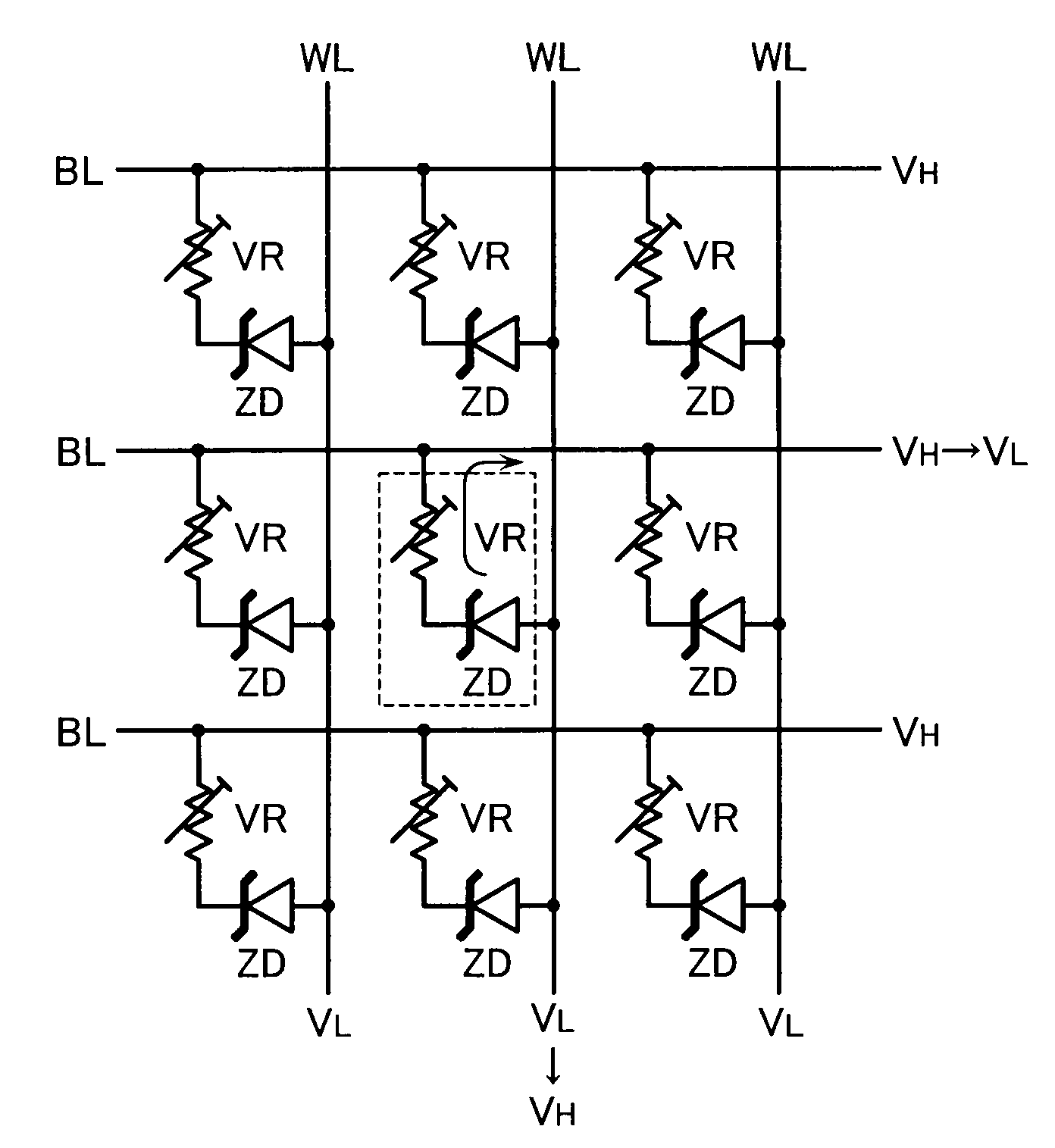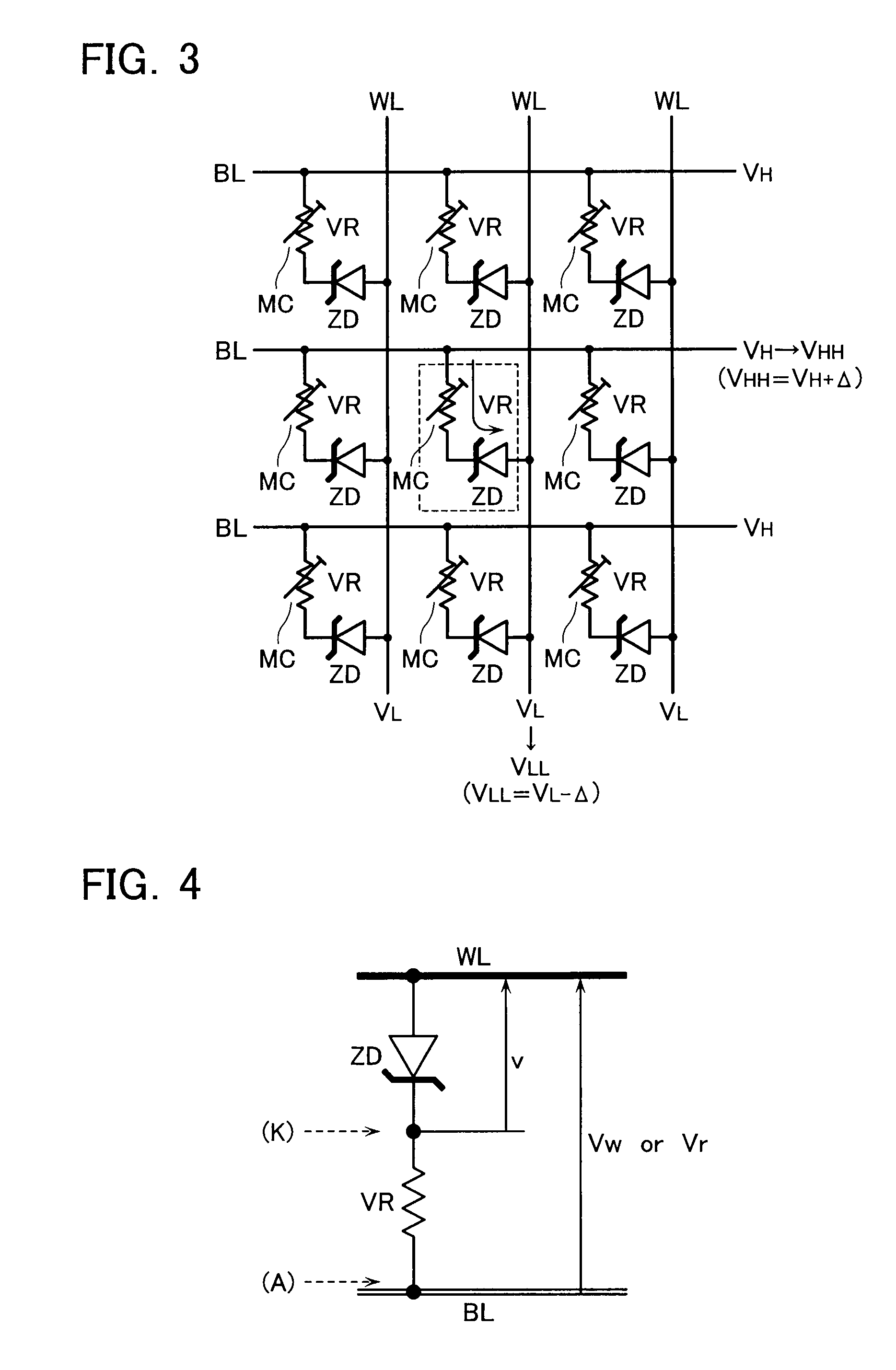Resistance change memory device
a memory device and resistance change technology, applied in the direction of information storage, static storage, digital storage, etc., can solve the problem of not being able to propose a detailed configuration of a cell array and a read/write circui
- Summary
- Abstract
- Description
- Claims
- Application Information
AI Technical Summary
Benefits of technology
Problems solved by technology
Method used
Image
Examples
Embodiment Construction
[0046]FIG. 1 shows a principle configuration of a programmable resistance (variable resistance) VR used in the present invention. The programmable resistance VR is formed of a resistance film 3 as being a memory material, and cathode, anode electrodes 1, 2 that sandwiches the resistance film 3.
[0047]The resistance film 3 is, for example, an ion conductor (solid electrolyte) formed of a chalcogenide containing metal ions such as silver, cupper and the like. For example, Ge—S, Ge—Se and the like may be used as the chalcogenide. When the resistance film 3 is formed of the above-described chalcogenide, the electrodes 1, 2 are also formed containing silver therein.
[0048]The resistance film 3 stores, for example, a high resistance state as a data “0” and a low resistance state as a data “1”. In this programmable resistance VR, apply a positive anode-cathode voltage (VAK>0) that is over a threshold value, and a data “1” will be written. Apply a negative anode-cathode voltage (VAKAK>0, a co...
PUM
 Login to View More
Login to View More Abstract
Description
Claims
Application Information
 Login to View More
Login to View More - R&D
- Intellectual Property
- Life Sciences
- Materials
- Tech Scout
- Unparalleled Data Quality
- Higher Quality Content
- 60% Fewer Hallucinations
Browse by: Latest US Patents, China's latest patents, Technical Efficacy Thesaurus, Application Domain, Technology Topic, Popular Technical Reports.
© 2025 PatSnap. All rights reserved.Legal|Privacy policy|Modern Slavery Act Transparency Statement|Sitemap|About US| Contact US: help@patsnap.com



